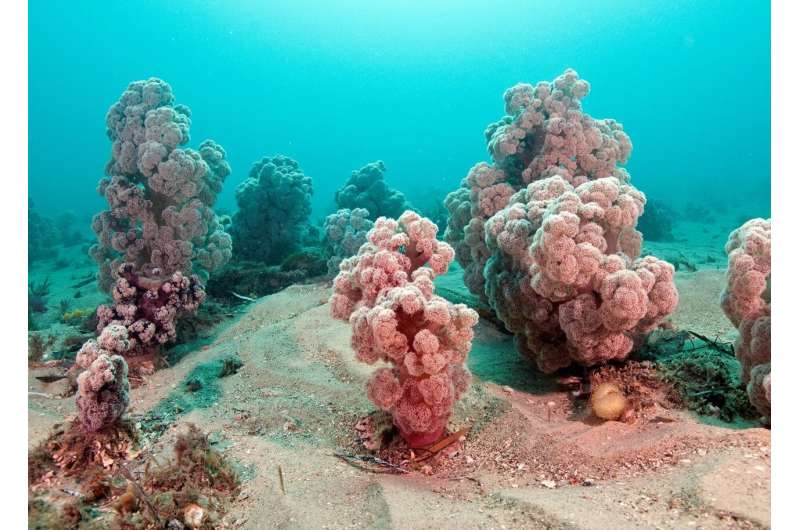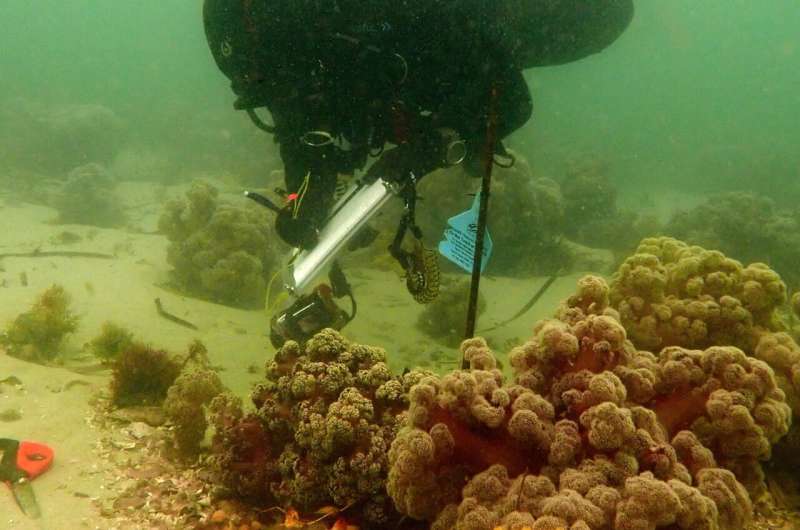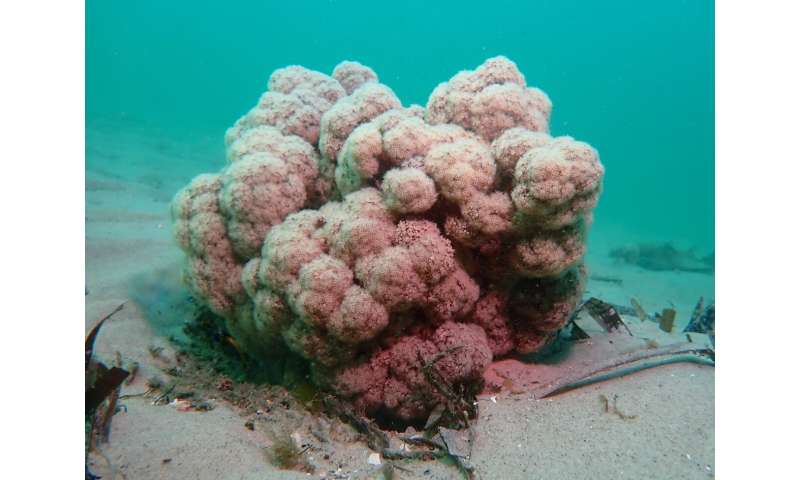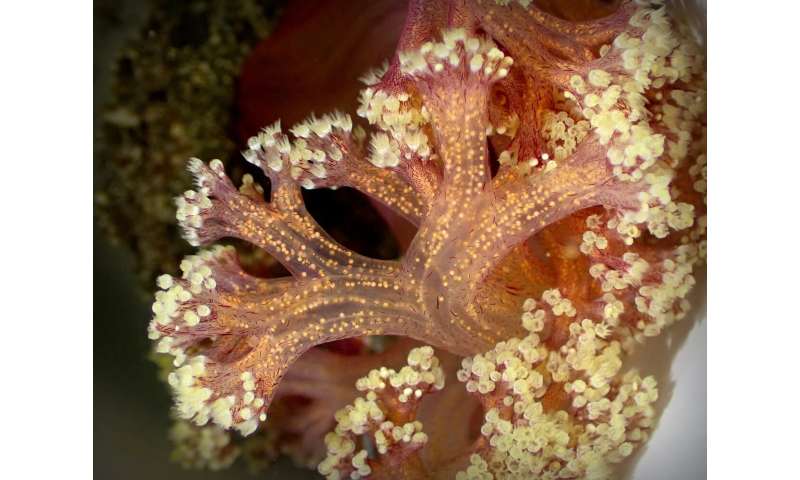This article has been reviewed according to Science X's editorial process and policies. Editors have highlighted the following attributes while ensuring the content's credibility:
fact-checked
peer-reviewed publication
trusted source
proofread
New research findings: Understanding the sex life of coral gives hope of clawing it back from the path to extinction

For the first time, scientists have mapped the reproductive strategies and life cycle of an endangered coral species, offering hope it can be clawed back from the path to extinction.
The purple cauliflower soft coral, Dendronephthya australis, is endemic to South Eastern Australia, with the largest populations historically found in the Port Stephens estuary in New South Wales. It is one of the 100 priority species on the Federal Government's Threatened Species Strategy.
Not only is the future of the coral at stake—having experienced the complete loss of aggregations (clusters of colonies) in the estuary over the past three years and other locations of the NSW coast—it serves as vital habitat for other species, including the Endangered White's seahorse and baby snapper.
A study published in the journal Marine Biology today, titled "A glimmer of hope for an Endangered temperate soft coral: the first observations of reproductive strategies and early life cycle of Dendronephthya australis," has researchers excited that these discoveries may help pave the pathway towards securing a future for the species.
Lead researcher, Southern Cross University Ph.D. candidate Meryl Larkin, said the paper was a welcome turnaround from her earlier work, which showed how badly the species had been decimated by shifts in sediment and La Niña flood events.
"Our discoveries open new doors for conservation strategies, including potential restoration efforts," she said. "It has given us real hope we can keep this coral off the extinction list."
The sex life of corals can be a complicated thing—differing both across various species and sometimes within the same genus. Reproduction can be both sexual and asexual. Parents can be male and female, or hermaphroditic.
Prior to this research, the reproductive strategies of Dendronephthya australis had not been observed or documented.
Ms. Larkin employed a combination of methods to map the reproduction strategies and life cycle of Dendronephthya australis, including histological analyses of fresh specimens, a 19-year collection of in situ images, and lab-based study in aquaria.
In a series of breakthroughs important to the survival of the species, Ms. Larkin was conducting lab work at the Port Stephens Fisheries Institute when she observed, for the first time, eggs and sperm within coral fragments from different colonies, thus confirming colonies are either male or female.

Then, discovering the time at which female corals spawn, she devised IVF methods to produce larvae, and with some advice from coral biologists at the Australian Institute of Marine Science, managed to achieve larval settlement in the lab. Through this process, Ms. Larkin became the first person to witness the single-polyp stage of baby corals for the species.
Coral babies produced in the lab were then successfully introduced back into the wild and have been growing well.
"This was a major step forward in the prospect of recovery by the species, because from just a few remaining colonies, we were able to produce hundreds of new individual corals," Ms. Larkin said, adding that the findings could be used to support the growth of wild populations and create new coral colonies to repopulate areas of habitat where they previously flourished.
-

One of the original coral babies is now 18 months old and adult size. Credit: Meryl Larkin -

Visible female oocytes on the purple cauliflower coral. Credit: Meryl Larkin
"Reproduction and early life stages are fundamental for understanding the dynamics of any species, particularly marine invertebrates," Ms. Larkin said. "These stages are essential for population establishment and growth, and understanding them helps us identify threats and extinction risks."
She noted that the findings highlight the need for further research on threatened species' reproductive processes.
More information: A glimmer of hope for an Endangered temperate soft coral: the first observations of reproductive strategies and early life cycle of Dendronephthya australis, Marine Biology (2023). DOI: 10.1007/s00227-023-04298-x
Journal information: Marine Biology
Provided by Southern Cross University



















